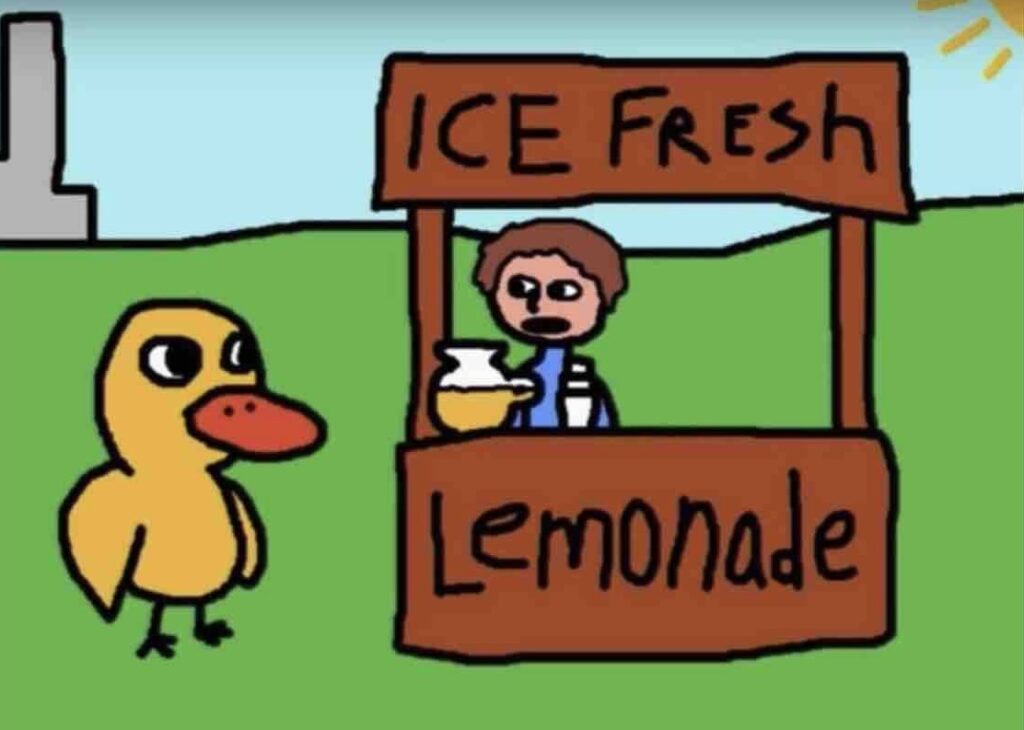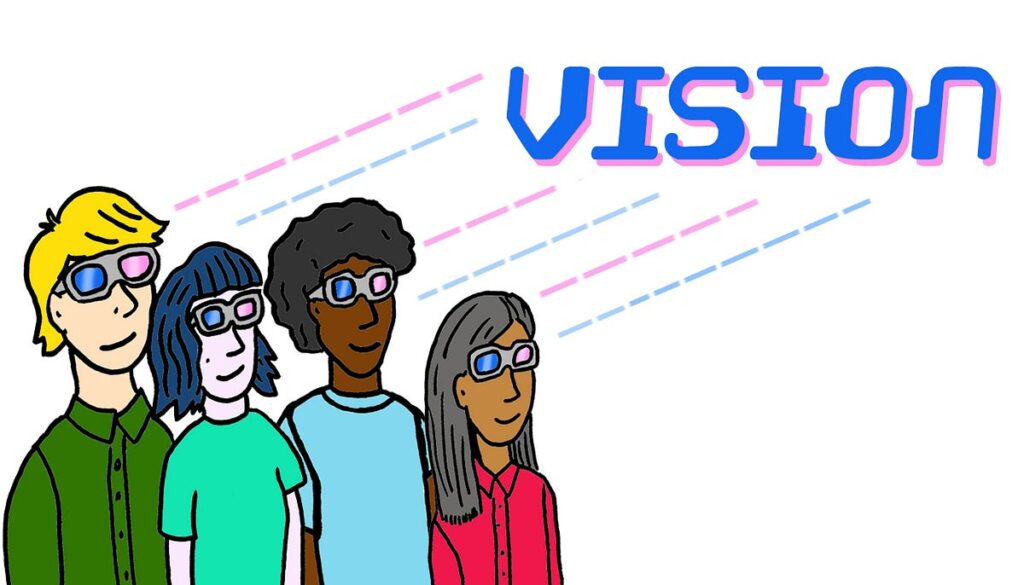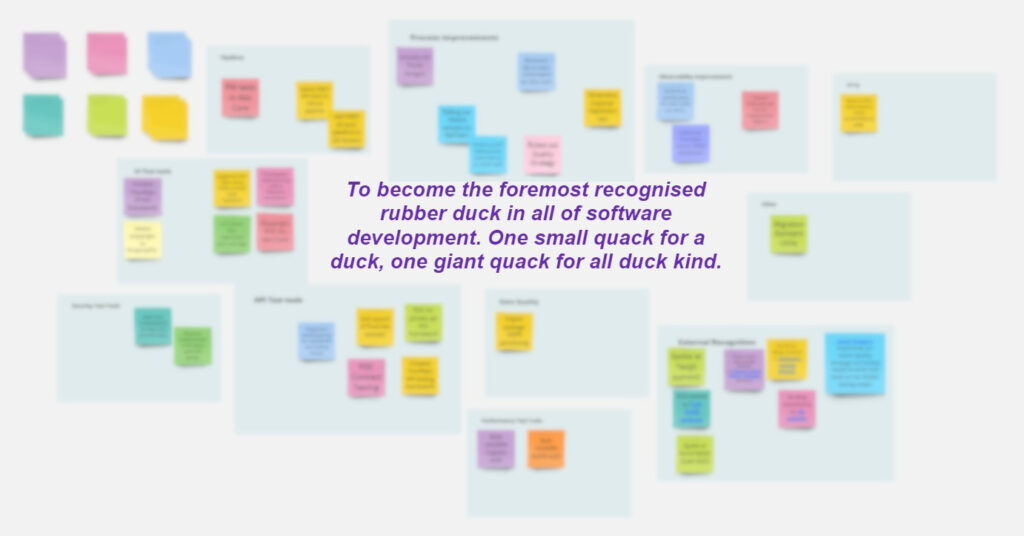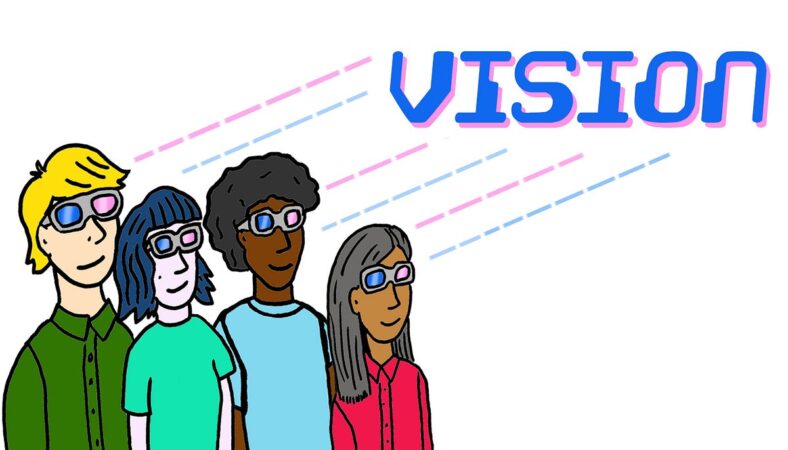When I was asked to create a Team Vision for my team as part of leadership training, I was sceptical. I trusted the trainers though and set to work. In the end, created something that even had me convinced! When I shared it with my team, I was able to be passionate about it, because I truly believed it. My team could see how excited I was about it, and that it came from a genuine place. So they too, bought into the vision.
We couldn’t let this spark of excitement die though. So we found ways to keep our excitement alive. This allowed us to celebrate as a team all of the success we had towards achieving our vision. Talking through the successes in a regular team update was great too. It ensured the whole team got to know and share in the success of their peers. It also helped make sure that as a manager I didn’t miss my teams wins and could celebrate with them.
Those 21 words helped a team to bond over a shared goal. To keep them motivated when they were struggling, and gave them a real sense of accomplishment. Below I’m going to talk a little about how to create a Team Vision for your team. Then go into more detail about how to introduce it to your team, and how to keep them motivated by it.
Creating a Team Vision
Before you create your Team Vision, you need to make sure you have clear understanding of the big picture for the organisation. It’s no good creating a Team Vision that focusses on selling Lemonade when the business is pivoting to sell grapes.

Understanding the companies vision and strategy ensures you are able to focus on the right things for your team. Company visions can feel distant, and let’s be honest, irrelevant, to people the further they are from the level that came up with the vision. A Team Vision helps people connect their work to the bigger picture. They are then more likely to feel connected to the organisation and understand their part in it.
Team Vision in Action 🚀🌒
The story of John F. Kennedys visit to NASA is a brilliant example of how someone at any level in a business can feel really truly connected to the company vision.
President John F. Kennedy was visiting NASA headquarters for the first time in 1961. While touring the facility, he introduced himself to a janitor who was mopping the floor and asked him what he did at NASA. The janitor replied, “I’m helping put a man on the moon!” in a happy voice.
The janitor got it! He had a real understanding of the vision and how his role was a part of it.

Know where you want to go
In addition to aligning your team’s work with the company vision, having a Team Vision helps focus the team around how they contribute to the overarching company vision. In fact, you can even take it a step further. Each member of your team could have their own personal vision. These would be a combination of how they contribute to the team vision and their self growth. This would be higher-level and more abstract than their Objectives and Goals, but may help focus them on how they can grow and contribute to the business.
Personal Visions
People often don’t realise that they already have their own visions, both work related and personal. Some examples of personal visions are
- Be a leader in my field, using my expertise to create positive change in the world. I will work towards developing my skills and building meaningful connections with others in my industry.
- To be a lifelong adventurer, traveling the world and exploring new cultures and experiences. I will work towards building a life that allows me to embrace my curiosity and take risks.
Visions don’t have to be that fanciful. They just make nice examples. As a manager I imagine you have a good idea about the goals and ambitions of your team. They will vary from person to person as we are all unique and on our own journeys. A junior members vision may be to be able to buy their first home. More senior members may be focussed on retirement. Whatever their personal vision is, using this to re-frame what a Team Visions is for can be helpful to convince the sceptics in your team of its use and purpose.
Team Visions
Your Team Vision should be be focused on a desired future state. Your vision should
- Be aspirational. I.e., It will be a picture of a better place than now.
- Be easy to understand.
- Use simple, everyday language.
- Avoid jargon.

Example Team Visions
They can be really difficult to come up with, so here are some examples to help inspire you.
To design products that spread happiness in every bite
Biscuit Company Innovation Team
To build programmes that build staff loyalty and confidence
Training Department of a Retailer
To create a team that is happy and productive, were we do our best work, help each other and have fun together
Charitable Organisation
We will support each other by listening, challenge each other with great questions and develop each other through feedback and coaching
Consulting Business

Introducing your Team Vision
So you’ve created your Team Vision? Great stuff! Now you need to introduce it to your team in a way that will maximise its impact. Before you do that though, ask yourself some questions
Do you REALLY believe in your vision?
You should be excited by it and eager to share it with anyone who will listen. If that’s not where you are at just yet, that’s ok, but maybe hold off sharing with the team just yet. It’s ok for a good Team Vision to take time to come up with. It’s also not unusual to painfully consider each and every word choice. You don’t have to do it alone though. Share your ideas with your peers and get feedback and iterate on it together. Once you have a vision you really believe and are excited to share, that’s how you know its ready to introduce to your team.
Have you got a plan for introducing it to the team?
Introducing your Team Vision should be done with care and consideration. Throwing it out into the wild at the end of stand-up or as a message in the teams slack channel are not going to get the engagement you want or need. You probably don’t want to do a dedicated meeting for it either. Instead pick a regular cadence meeting in your teams calendar where introducing it would fit with the nature of the meeting.
For matrix managed teams, like Quality often is, a regular team update meeting where you come together to discuss your recent work is a great place to introduce it. For a stream-aligned / enabling / platform / sprint / whatever other term you use for a development team there are more options, but a Ways of working or as an addition to a Retrospective feel like the right place.
Once you’ve decided when you are going to introduce the team vision, you need to focus on the how. As I mentioned above, you need to deliver the introduction with sincerity and passion. You need to help the team understand quickly what the vision is, what is for, and what it means to them. Delivered well, you should be able to bring even the most sceptical around to seeing the value.

Keeping the Team Vision alive
Introducing your Team Vision, and getting the buy in from your team is just the first hurdle. Now we need to keep the vision alive.
I found the best way to do this is to pick a cadence in which you will regularly discuss what the team, and individuals in the team, have done to contribute towards achieving the team vision – remember, its aspirational, so there should be something you can work towards. My preferred way of doing this was with a Team Vision whiteboard.

Visualising the teams impacts
Probably the most enjoyable part of creating a Team Vision, was using it as a shared goal for the team to work towards. We visualised our progress using a simple whiteboard setup, with the Team Vision in the middle and post it notes around it with contributions towards reaching our vision.
For our team vision, the aim was some what difficult to put a metric against. However, it was clear to everyone on the team the sorts of behaviour and successes that would contribute to achieving the lofty goal the Team Vision set for us. For us, this simple way of visualising it was great. It gave a central point where we could review and discuss the successes we had all had. Either as a team, or as individuals.
Where your Team Vision has a more tangible, measurable metric, then you can add another layer to this approach by adding in a GRAPH! Everyone loves a good graph, right?
For this I’d still take a similar approach to the above whiteboard example, but I’d add an updateable graph in the middle. Ok so the graph would probably be exported from excel and added in when preparing for the next call where we reviewed the success, but you get the point.
Whatever you do, please don’t make this dull! A Team Vision should be about celebrating how amazing we are, and that calls for fun! Emojis, GIFs, silly pictures, in jokes, whatever works for your team, but keep it light, keep it fun, and keep people engaged!

Celebrate the wins
It may seem obvious, but remember to celebrate the wins! Not just as a team, but outside the team too! Make sure you let the rest of the business know just how awesome your team is. This benefits the whole team and will have a great impact on how the team feel within the business.
Where appropriate, celebrate, and reward, individuals in public too. If your business has a method for providing additional financial rewards, like gift cards, be sure to use them. These small tokens go a long way towards people feeling their hard work is appreciated. And now you are actively collecting this information about all the brilliant work they are doing, it would be wrong not to use this to reward them.
Summary
A little outside my normal blog content, but hopefully you enjoyed this. As I mentioned in a recent post, I have been reflecting a lot recently on my time at Zoopla. The leadership training I got to do as part of my time here was invaluable. I was a sceptic going in but a convert coming out the other side. Creating a Team Vision was part of that training and one of the things that I felt made a huge impact on me and my team. I’d love to know how it goes for you if this is something you do, so please do let me know!

Further Reading
If you enjoyed this post, then you may enjoy more of my posts about Engineering Leadership. You can view them all by visiting the Engineering Leadership category of my blog.
Also I can’t not give a shout out to Emily Wilson. Emily is a Senior Talent Development Partner at Zoopla and a key player in the creation of Zoopla’s leadership training. She also creates and shares some fantastic content on LinkedIn, so if you liked this, you should definitely check out her LinkedIn.
Subscribe to The Quality Duck
Did you know you can now subscribe to The Quality Duck? Never miss a post but getting them delivered direct to your mailbox whenever I create a new post. Don’t worry, you won’t get flooded with emails, I post at most once a week.


Leave a Reply